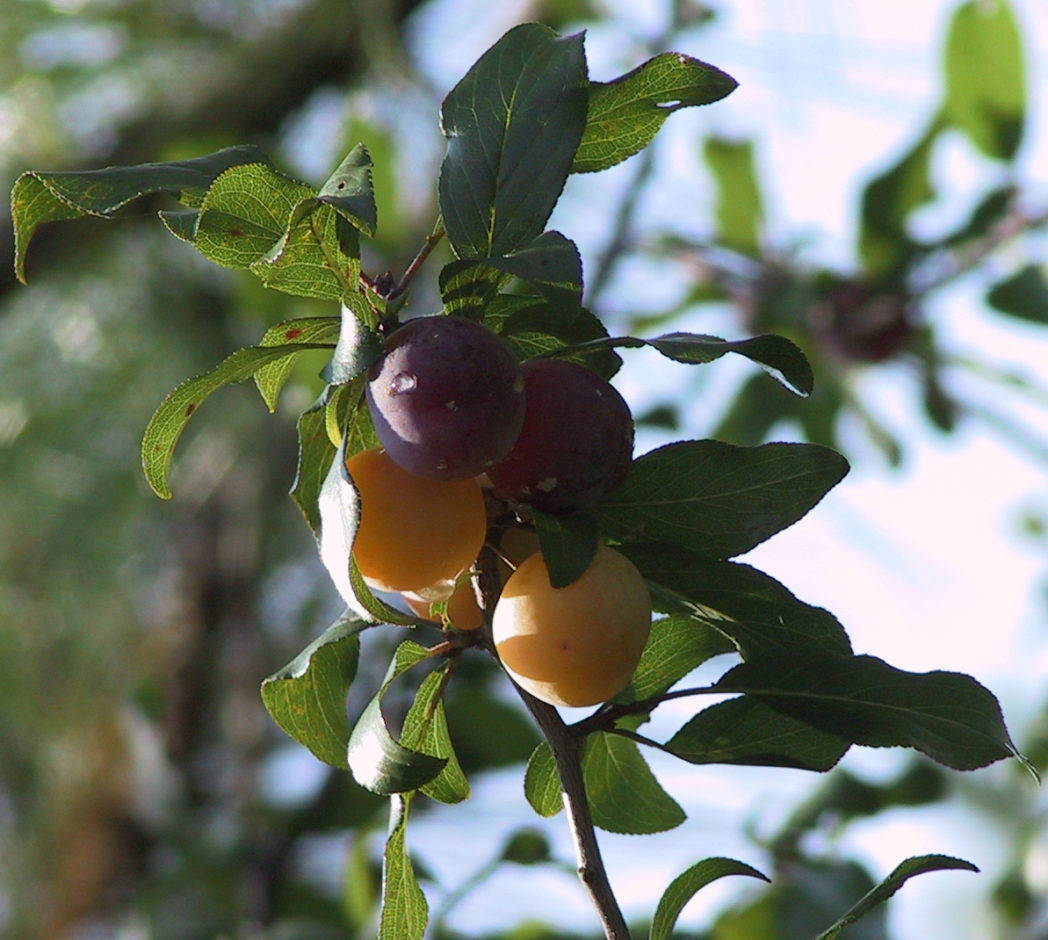Chickasaw plum
Pictured above: Chickasaw plum (Prunus angustifolia) in bloom by Stacey Matrazzo. Click on terms for botanical definitions. View post as a PDF.
Chickasaw plum (Prunus angustifolia) is a deciduous flowering shrub or small tree that produces profuse blooms before leafing out, making for a spectacular spring display. It occurs naturally in dry hammocks, woodland edges, and disturbed areas and roadsides. The flowers are very attractive to a wide range of pollinators. The fruit is eaten by birds and other wildlife. Humans can eat it, too, but it is quite tart and has a large seed. It is best made into jelly.
Chickasaw plum flowers are five-petaled and white with many obvious yellow anthers. Blooms are cupped in yellowish-green sepals. Leaves are 1–2 inches long and lanceolate with shiny green surfaces and finely toothed margins. They are alternately arranged. Fruits are cherry-like yellow drupes that turn reddish or purplish-pink when ripe, usually in late summer. Bark is rough and dark on the trunk, but more reddish on branches. Chickasaw plum has an interesting growth habit that results in an irregular shape and a “twiggy” look.
The plums were a favorite food of Chickasaw Indians and other Native Americans who cultivated and spread the plant before Europeans arrived.
Family: Rosaceae (Rose family)
Native range: Central and west Panhandle to north and central peninsula
To see where natural populations of Chickasaw plum have been vouchered, visit florida.plantatlas.usf.edu.
Lifespan: Perennial
Soil: Dry to moist, sandy soil
Exposure: Full sun to partial shade
Growth habit: 12–20’ high, 10–20’ wide
Propagation: Seed, cuttings, transplanting suckers (note: digging may cause more suckering)
Florida regions of landscape suitability: North, Central
Garden tips: Because it has a tendency to sucker, Chickasaw plum can form dense thickets and may be difficult to control. This same characterization, however, also makes it a good candidate for a buffer or screen planting and for soil stabilization.
Chickasaw plum is often available at nurseries that specialize in native plants. Visit PlantRealFlorida.org to find a native nursery in your area.
Learn more about Chickasaw plum from the Florida Native Plant Society and the Institute for Regional Conservation.
For information on other Prunus species, see these resources:



